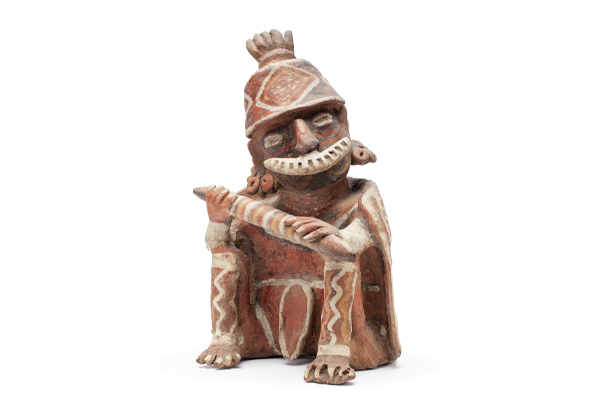
HOME / PUBLICACIONES / Pasajes de Investigación / Tradición de tumbas de tiro y tumbas de cámara

Tradición de tumbas de tiro y tumbas de cámara
One of the representative funeral traditions of Western Mexico is the tradition of shaft tombs and chamber tombs. The deceased and the offerings were placed in chambers excavated underground, which were accessed through a shaft. This tradition began approximately around 800 BC, and ceased to be practiced around 650 AC, spanning over 1400 years with regional stylistic variations.The oldest shaft tombs are in the Mascota Valley in Jalisco, and later, they have a wide distribution in Nayarit, Jalisco, Colima, Michoacan, and some areas of Sinaloa and Zacatecas.
The deceased could be adorned with shell rings on their arms and legs, as well as strings of shell and greenstone beads on their chest. Alongside them, vessels, musical instruments, metates, projectile points, figurines, and clay sculptures were placed.
Alongside the tradition of shaft tombs and chamber tombs, other funeral traditions coexisted, including direct burials in the ground or placement in large clay urns. In the latter, the mortuary treatment could include cremated bones, or individuals in a flexed position or disarticulated bones within mortuary bundles.